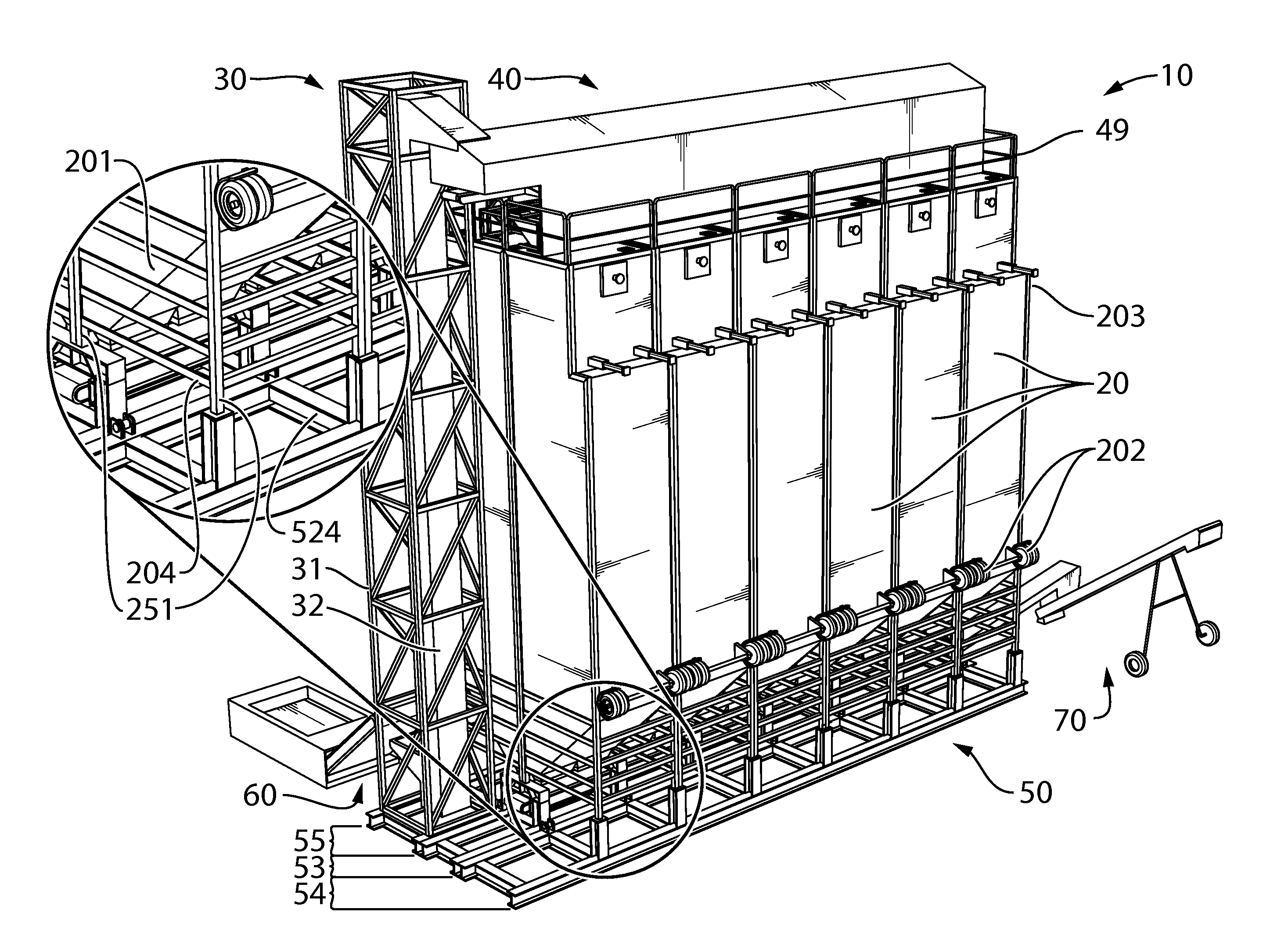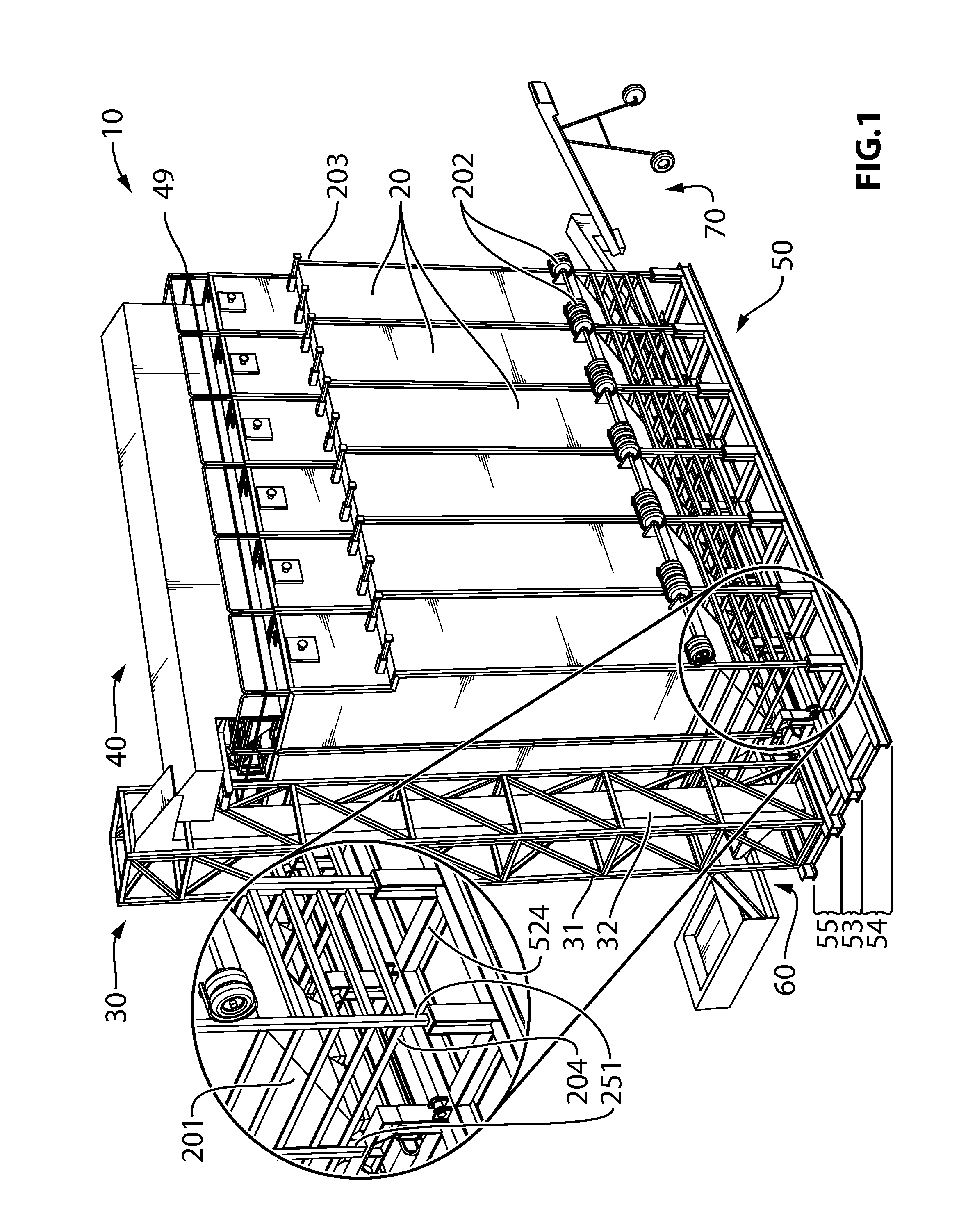Mobile dry material storage
- Summary
- Abstract
- Description
- Claims
- Application Information
AI Technical Summary
Benefits of technology
Problems solved by technology
Method used
Image
Examples
Embodiment Construction
[0021]Reference is first made to FIGS. 1-5 depicting various views of an illustrative system 10 embodying the principles of the present invention, the system having been assembled and ready to receive and store sand or other material and to thereafter discharge same.
[0022]System 10 includes a plurality of elongate storage bins 20 which are substantially rectangular in cross-second over the majority of their length so as to comprise an elongate box in which sand or other material can be stored. Bins 20 are positioned vertically upright on a base structure, or “skid,”50 in at least one line—illustratively touching, or at least very close to, one another. In this embodiment, there are 12 bins arranged in two lines of 6 bins each. Each bin 20 has a discharge end 201 through which product in the bins can be discharged downwardly via gravity feed. Discharge end 201 includes a discharge outlet 209 that can be closed and opened (via a mechanism not shown) to controllably dispense sand or ot...
PUM
| Property | Measurement | Unit |
|---|---|---|
| Length | aaaaa | aaaaa |
| Height | aaaaa | aaaaa |
Abstract
Description
Claims
Application Information
 Login to View More
Login to View More - R&D
- Intellectual Property
- Life Sciences
- Materials
- Tech Scout
- Unparalleled Data Quality
- Higher Quality Content
- 60% Fewer Hallucinations
Browse by: Latest US Patents, China's latest patents, Technical Efficacy Thesaurus, Application Domain, Technology Topic, Popular Technical Reports.
© 2025 PatSnap. All rights reserved.Legal|Privacy policy|Modern Slavery Act Transparency Statement|Sitemap|About US| Contact US: help@patsnap.com



